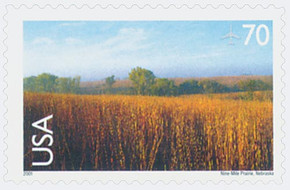
Voyageurs National Park is in northern Minnesota, near the Canadian border. It covers a vast area and is known for its forests, waterways and huge, island-dotted Rainy, Kabetogama and Namakan lakes. The Ellsworth Rock Gardens, created by artist Jack Ellsworth, are a series of abstract sculptures on a terraced outcrop. The remote Kettle Falls area has a dam and a red-roofed hotel, ... more
Voyageurs National Park is in northern Minnesota, near the Canadian border. It covers a vast area and is known for its forests, waterways and huge, island-dotted Rainy, Kabetogama and Namakan lakes. The Ellsworth Rock Gardens, created by artist Jack Ellsworth, are a series of abstract sculptures on a terraced outcrop. The remote Kettle Falls area has a dam and a red-roofed hotel, both from the early 20th century.
Voyageurs National Park
On April 8, 1975, an Act of Congress officially established Voyageurs National Park.
Native Americans first began living in the Voyageurs National Park area around 10,000 years ago. Later, people found the waterways as they followed animal and plant populations to where they were most plentiful. Today, there are 18 Native American tribes culturally related to Voyageurs National Park. Those that have been in the area the longest are the Algonquian-speaking groups such as the Ojibwe, Cree, and Assiniboine. The Ojibwe were the main occupants from the early 1700s on.
The first European explorer to reach Voyageurs National Park was French-Canadian Jacques de Noyon in 1688. He and his companions had followed the Native American canoe route over the Laurentian Divide, past Atikokan, Ontario, and through Minnesota. De Noyon built a fort, developed a relationship with the local Assiniboine tribe, and spent the winter of 1688 on the shore of Rainy Lake. The plentiful beaver population and interconnected waterways quickly made the area an important part of the North American fur trade.
As European demand for beaver pelts increased, more and more fur traders, called voyageurs, came to the Rainy Lake region. These men traversed the waterways in large birch bark canoes, carrying furs and other trade goods to and from Montreal. The voyageurs first came to the area when the fur supply in eastern North America began to dwindle. They were the first Europeans to explore the Northwest Territory and build trade relationships with the local Native American tribes on a commercial scale. By 1780, the Ojibwe became the main supplier of food, furs, and canoes, with an extensive knowledge of the region and its resources, making them excellent guides as well. In turn, some voyageurs later became guides to other early North American explorers.
Most voyageurs couldn’t read or write, so there are very few historical documents found from that time. Voyageurs were tough, intrepid men who braved the wilds of the northwest to make their living. Many began their careers in their early 20s and retired in their mid-60s. As the fur trade developed, voyageurs learned to use the same tools and clothing as the Native Americans in the area to get the most out of their time in the wilderness.
The life of a voyageur was full of hard work and danger. Voyageurs often had to carry two or more 90-pound bundles of fur while transporting their canoes over land. Despite their profession, many voyageurs couldn’t swim, so drowning while navigating rapids or lakes in stormy weather was not uncommon.
Voyageurs rose before dawn (sometimes as early as 2 a.m.) and were expected to paddle 55 strokes per minute. They survived off packs of food containing dried meat and peas, not having time to hunt or gather along the way. As steamships and railroads came to North America in the 1880s, voyageurs were no longer needed. The North American fur trade declined not long after, as silk became more popular in clothing than fur. By 1892, it was obsolete.
The Minnesota Legislature first proposed Voyageurs National Park in April 1891, in the hope of establishing a national park in the northern part of the state. However, little came of the suggestion until 1962 when the idea became more popular. U.W. Hella, Sigurd Olson, and Minnesota Governor Elmer L. Andersen established the Voyageurs National Park Association in May 1965. The group dealt with much opposition, both from people who wanted the area preserved as pristine wilderness and those who wanted less restricted use of the land. The movement eventually gained enough support, and on January 8, 1971, President Richard Nixon authorized the park’s creation. Four years later, on April 8, 1975, Congress officially established Voyageurs as America’s 36th national park.
Today Voyageurs National Park stands as a reminder of the thousands of men who paddled their canoes through Canada and Minnesota with their bundles of furs. Not only did they help grow the economy of the area, but they encouraged settlement and opened pathways previously unknown to bring people to the northwest.
Less
Most Orders Ship
within 1 Business Day
90 Day Return Policy
Satisfaction Guaranteed
Earn Reward Points
for FREE Stamps & More














